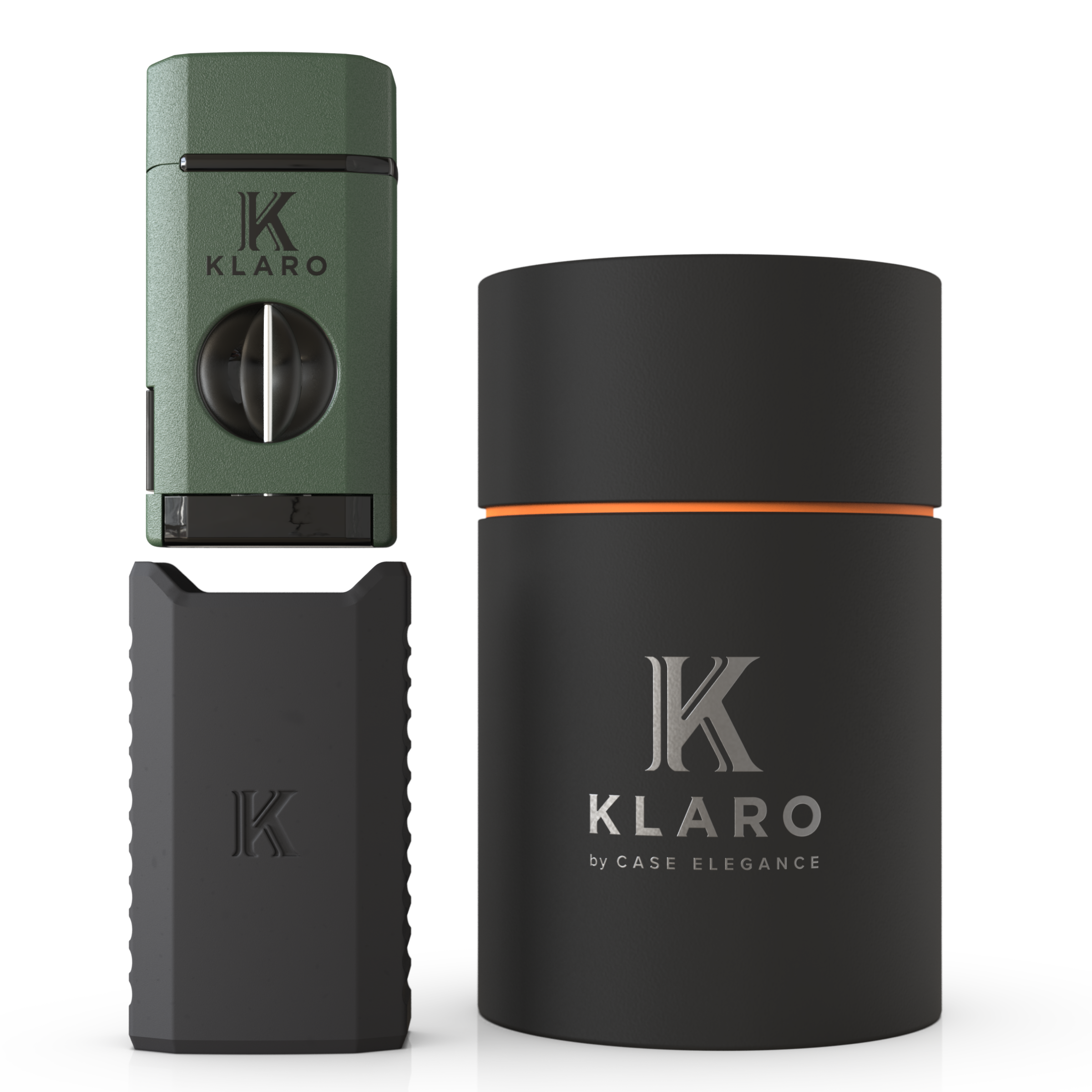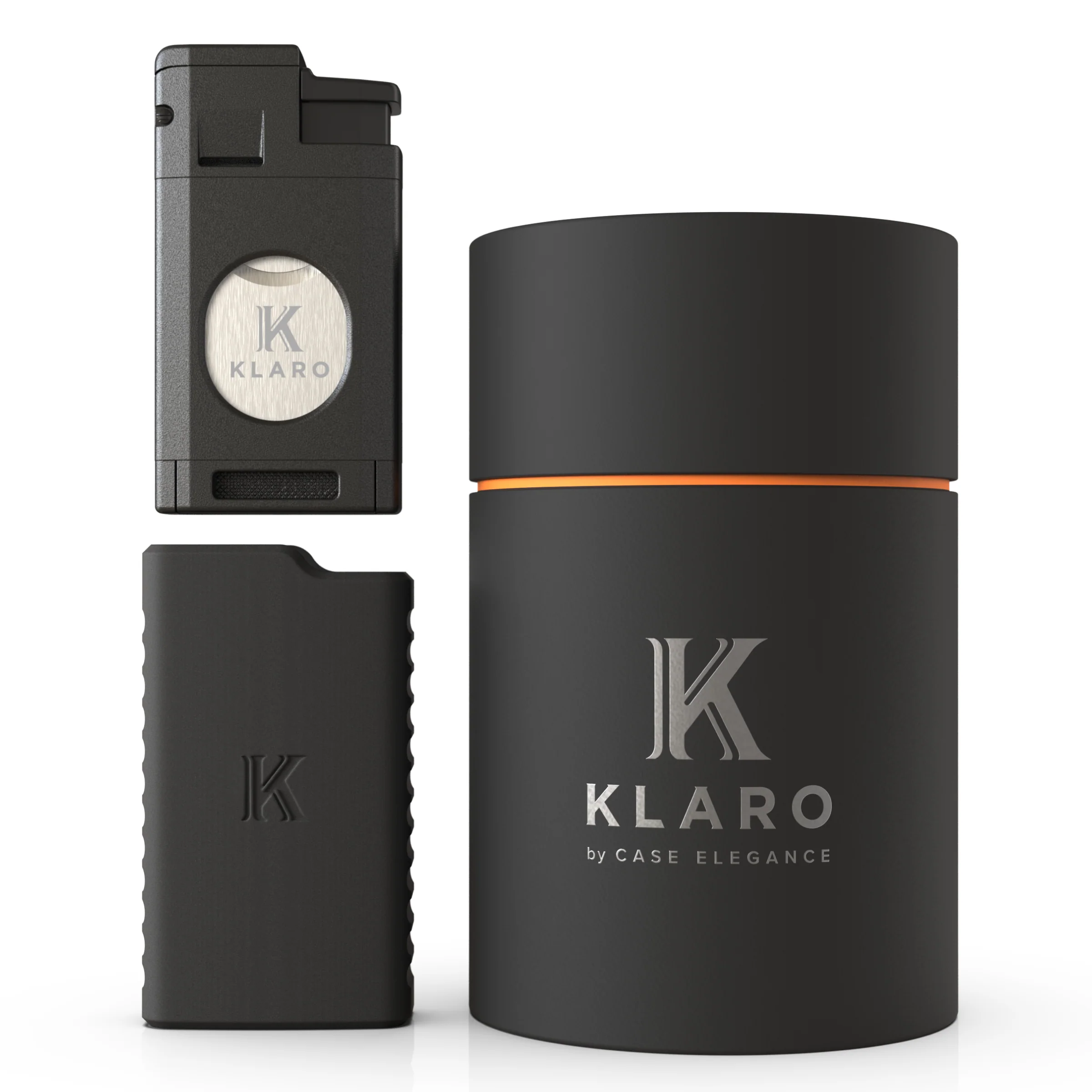While the pleasurable and soothing effects of nicotine likely drove some of the widespread popularity of cigars in Europe in the 17th century, it wasn’t until the mid-19th century that scientists began to study nicotine and developed a better understanding of its role in tobacco and its effect on smokers. This is also when cigars reached peak popularity and benefited from mass production and market demand. Now, we know quite a lot about nicotine’s effects and the possibility of dependence—especially pertaining to cigarettes. But cigars? Less so. Asking, “Do cigars contain nicotine?” is a perfectly logical question, and we aim to unpack it here.
Anyone who has smoked a cigar likely has experienced the effects of nicotine. Hopefully, your first stogie was a good experience all around, and you were briefed on what to expect and how to proceed should you begin feeling a bit loopy. Others have not been so lucky! But it’s tough for anyone to know exactly how much nicotine is in a cigar, or how it will affect them. Do some cigars contain more nicotine than others? Are cigar smokers exposed to the same risk as those who smoke cigarettes when it comes to dependence?
While smokers and non-smokers alike received a lot of education about the danger of cigarettes and their addictive qualities, most cigar smokers still have a lot questions around nicotine content, how much is there, and how to navigate the world of cigars responsibly. So let’s explore!

Understanding Nicotine
What Es nicotine, even? Alright. Nicotine is a chemical, an alkaloid, found naturally in tobacco and other plants in the nightshade family. When consumed—typically smoked, chewed, or snuffed—it is a stimulant that affects your nervous system and increases dopamine production, which is notably pleasurable and gives you the sensation of relieving stress, albeit temporarily.
You likely knew the gist. But there’s more beneath the surface. For example, nicotine is actually synthesized in the roots of tobacco plants but then accumulates in the leaves, which is why nicotine content varies depending on the type of leaf used in the cigar, which we will explore in greater depth.
When ingested, nicotine can affect the body in many different ways. As alluded to, even small amounts of nicotine can cause nausea or sickness in someone who has not been exposed before, though this is typically brief. Other short-term effects include dryness of mouth, increased heart rate, lack of appetite, and increased blood pressure. Short-term benefits include dopamine release, improved mood, and improved alertness—all of which help explain the popularity of cigarettes and smokeless tobaccos.
But the amount and frequency of nicotine you consume can have additional effects on the body and mind. Notably, nicotine is highly addictive. While high amounts of nicotine can cause jitteriness or anxiety, the withdrawals from nicotine from dependency also produce such effects as well as irritability, increased appetite, and intense anxiety.
So there’s a lot at work and a lot to keep in mind. As a cigar smoker who wants to continue enjoying the experience, the best tactic is to know as much as possible about the effects and risks of nicotine, how to mitigate them, and—perhaps most importantly—know more about cigar composition and construction and how these affect the quantities of nicotine you’re exposed to.

Nicotine Content in Tobacco Products
Cigars have an interesting relationship with nicotine due to the fermentation process they undergo, as well as the curing process. During fermentation—which occurs in some degree with all cigar tobacco—nicotine levels fluctuate, often decreasing. How much fermentation a tobacco leaf receives will, in part, determine
But, as mentioned, the type of leaf used will affect nicotine content the most. For example, the ligero leaf contains the highest concentration of nicotine.
Beyond the leaf type and the curing process, the actual size of cigars is another of the biggest determinants of their nicotine content. The more tobacco in a cigar, the more nicotine you will be exposed to. This is a fairly obvious but often misunderstood. When someone says that a cigar has ten times the amount of nicotine in a cigarette, you may be quick to notice that many cigars contain roughly ten times the tobacco as a cut-leaf, paper-rolled cigarette. You could make similar inferences of smokeless tobacco.
Tip: by smoking a smaller cigar, you lower the quantity of nicotine you’re exposed to. While it still may be a considerable amount—10-20 milligrams per cigar—it’s still far less than most large cigars.
Also, how you smoke determines how much nicotine your body will be exposed to. We cover more of this later, but most cigar smokers do not draw the smoke into their lungs, which, among other benefits, somewhat reduces your exposure to nicotine.

Composition of Cigars
The amount of nicotine in any given cigar varies. As mentioned, size is an important first indicator. But if you know the types of leaves used in the construction of the cigar, you can make inferences on the nicotine levels.
Conveniently enough, the location of the cigar leaf on the plant goes in order of strength.
- Ligero - Found on the very top of the plant, ligero leaves contain the most nicotine content (as a result of sun exposure).
-
Seco - Seco leaves are located on the middle of the plant and contain moderate amounts of nicotine. Again, this is related to its exposure to sunlight.
- Volado - Lastly, volado leaves, the lowest on the plant, have the lowest le
So, cigars that are blended with higher concentrations of ligero leaves will have higher nicotine levels, and so on. In addition, how tightly a cigar is rolled will affect its nicotine content; cigars rolled tightly with many leaves will have higher nicotine levels.
Nicotine Presence in Cigars
So how much nicotine is in a cigar? Variables like the size of the cigar, the leaves used, and the fermentation and curing processes all affect the overall nicotine content in a cigar. Cigar manufacturers and connoisseurs break up the nicotine strength of a cigar with the following descriptions:
- Light or mild
- Mild/medium
- Medium
- Medium/full
- Strong or full
In general, for a traditional-size cigar in the medium range, you’re looking anywhere from 100-200 milligrams of nicotine. Which is substantial. To compare, there are approximately 10 milligrams of nicotine in a single cigarette. Again, consider the amount of tobacco being burned in a stogie versus a cigarette, and the quantity of tobacco alone correlates with the nicotine comparison.
But how much of that nicotine is getting into your body? This is a bit more difficult to dial in, but the delivery method of the nicotine matters. So let’s explore the difference between cigar smoking and cigarette smoking.

Cigar Smoking vs. Cigarette Smoking
Most smokers don’t inhale cigars. If you’ve inhaled cigarettes and experimented with inhaling cigars, you know the experiences are very different. Cigar smoke is harsher, and stronger, and inhaling it is not a pleasurable experience. Some do, but it’s a rare breed. And, without debate, smoking a cigarette goes down easier. Almost as if they were made to.
Inhaling is the delivery met
So, do you inhale when smoking a cigar?
Smoking a cigar is a bit different. Here, you don’t inhale the smoke—at least not traditionally. But that doesn’t mean you aren’t exposed to the nicotine. In fact, this is a common misconception about smoking cigars, that if you don’t inhale, you don’t risk the effects of nicotine or the possibility of nicotine dependence. That’s not quite so. Even puffing on a cigar exposes you to the nicotine, as it can be absorbed orally when smoke enters or is held in your mouth, though at lower levels than if you were to inhale.
Keep in mind, studies show that different cigars have different absorption rates. This is related to the pH level of the cigar. Those who smoke cigars with higher pH levels will absorb more nicotine, while those who smoke cigars with lower pH levels will absorb less. The obvious issue smokers face? Cigars are not labeled with pH levels, so it’s difficult to know where your particular cigar falls on the spectrum of pH levels.

Health Effects of Nicotine in Cigars
Anyone smoking cigars on a somewhat consistent basis should be aware of their exposure to nicotine. We’ve talked a bit about the short-term effects, but there are additional long-term concerns that give us good reason to keep a watchful eye on our intake.
Nicotine is not a carcinogen, but the delivery methods of nicotine typically are. That’s why nicotine dependency should be avoided. Further, nicotine intake can lead to gastrointestinal issues, hypertension due to sustained high blood pressure, fertility problems, and can even affect bone density.
Nicotine is an addictive substance, and you can develop a physiological and psychological dependence on it. While there are some upsides to smoking cigars over cigarettes, you don’t eliminate the r
Misconceptions about Nicotine in Cigars
We’ve covered some important discrepancies regarding nicotine in cigars, so let’s review some of the most important ones here:
- Cigars often contain high volumes of nicotine, especially large vitolas with more tobacco packed into them.
- Even when you don’t inhale, you still absorb some amounts of nicotine when you smoke a cigar, which could lead to dependence.
- Even when you don’t inhale cigar smoke, as a cigar smoker you still may risk health issues due to exposure to nicotine and chemicals related to smoking tobacco.
- The longer and more you smoke, the more you put yourself at risk of nicotine dependence.
- The size and type of cigar you smoke matters: larger cigars will have higher amounts of nicotine.
Regulations and Labeling
As you may already know, the minimum age required to purchase and smoke cigars in the United States is 21 years. Regulations differ from country to country, but most have in place certain requirements. For example, the FDA also requires manufacturers to submit an ingredient list for their tobacco products for review. And they also require manufacturers to provide important health warnings on the packaging of their cigars.
These regulations and labeling help to inform the public of the potential dangers of tobacco and ensure that only those of the proper age can have access to tobacco products.
Navigating the Nicotine Conundrum
When you browse cigars online or visit your local tobacco shop, the information we’ve provided in this article should give you a better understanding of how much nicotine is present in the cigars you choose from. That’s part one, and it can help you determine what you like and what you want to be exposed to. (For example, don’t choose a ligero-packed bomb for your cousin’s first cigar).
Part two is being aware of how nicotine affects you individually and how often you are exposing it to yourself. Don’t inhale. Put some time in between periods of high-cigar consumption (i.e., P.C.A. Shows). Keep in mind why you’re reaching for that cigar. These lessons help. In the words of the great Jim Harrison, “The reason to moderate is to avoid having to quit.” We get it, cigars are great. Just know what you’re getting into.














